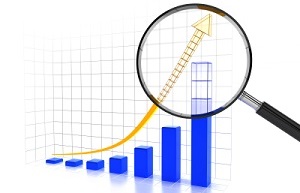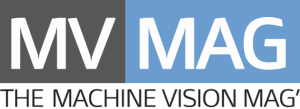
The last few years have seen a rapid rise in the uptake of Smart Cameras in machine vision environments where a complex system was previously required.
Several years ago your machine vision solution would have comprised many discrete elements in addition to the simple digital cameras: frame grabbers, expensive cabling to prevent signal loss, dedicated computer to process the images and specialist software. This kind of setup required a team of several technicians to build and a skilled professional to operate.
The major factors impacting the increase in usage for Smart cameras
- They are predominately standalone units giving a potential for greater versatility.
- They require a much simpler installation meaning a much reduced implementation time and similarly reduced reliance on specialized technicians.
- The flexibility of the units allow for multiple uses.
- The difference in what they mean for communications, network and speed of response leads to a meaningful drop in Total Cost of Ownership for your machine vision implementation.
How does the Smart Camera do the job?
While each unit contains the elements of a normal industrial camera, it is also a self-contained vision system with everything required for frame-grabbing, image-processing, decision making, and reporting.
This means that each Smart Camera is highly configurable, able to be tuned to work on whichever tasks its optics allow.
Most of the time these cameras are designed to fit in the same “footprint” as a standard surveillance / industrial camera, allowing for an easy transition from “traditional” to Smart.
What exactly is in a Smart Camera?
A Smart Camera often contains many (sometimes all) of the following components
- An area or linear (CCD/CMOS) image sensor
- Digitization circuitry
- CPU or other suitable processor
- Volatile memory (RAM) for image cache
- Volatile memory (RAM) for operating system & applications
- NVRAM/SSD (often flash) for operating system, programs and persistent data
- RS232, Ethernet, and/or other communication interface(s)
- Optoisolated I/O lines
- C/CS/M-mount lens holder, or built-in lens
- Basic LED lighting
- Operating system (either realtime or “off-the-shelf”)
- A video output (e.g. VGA/SVGA)
Does that mean I can just plug and play?
Yes and no…
If you are used to the complexity involved in setting up a prior machine vision system then the simplicity afforded by using Smart Cameras may seem almost plug-and-play.
Although, in the past, Smart Cameras have often been used for simpler applications, modern units have PC-like processing power and functionality. Due to this, Smart Cameras have reached widespread use, as the technology has reduced the unit size while the processing power has reached a genuinely useful level.
Similarly, the output from a Smart Camera is usually a direct network connection, reducing the complexity of image transmission as well as the sheer volume of data.
More complex or specialised situations or applications often still require specific lighting and/or optics.
So where can Smart Cameras be used?Â
Smart cameras are able to operate independently and asynchronously and while they can fulfil the functions of a dedicated, static camera the use of their functionality is best maximised when in situations requiring those abilities, or when, for example, distributed vision is paramount.
Typical applications include:
- Automated QA inspection
- Inspection of continuous materials (for example: tubes, wires, extruded plastic) where reaction times may be critical
- Robot guidance
- Unattended surveillance
- Biometrics
So what was that last point about TCO?Â
With most of the processing happening on each unit, only a standard GigE network is required for data transmission, reducing the need for more expensive installations. Similarly, the computing requirements, outside of the Smart Cameras, is potentially reduced to just monitoring and batch control; far less processing power than was required for constant image processing.
In terms of support, the reduction of the means of image transmission to a basic network means it can be handled by your IT department without having to hire a specialist consultant; and fewer bespoke applications mean an easier time in finding technical staff able to support the systems.
Finally, the units themselves do not represent a massive capital outlay, given the commodity nature of the electronics involved. All-in-all, Smart Cameras rival or outstrip their traditional counterparts for use in a machine vision environment. So long as you get the lighting right!







No Responses to “Rise of the Smart Cameras!”